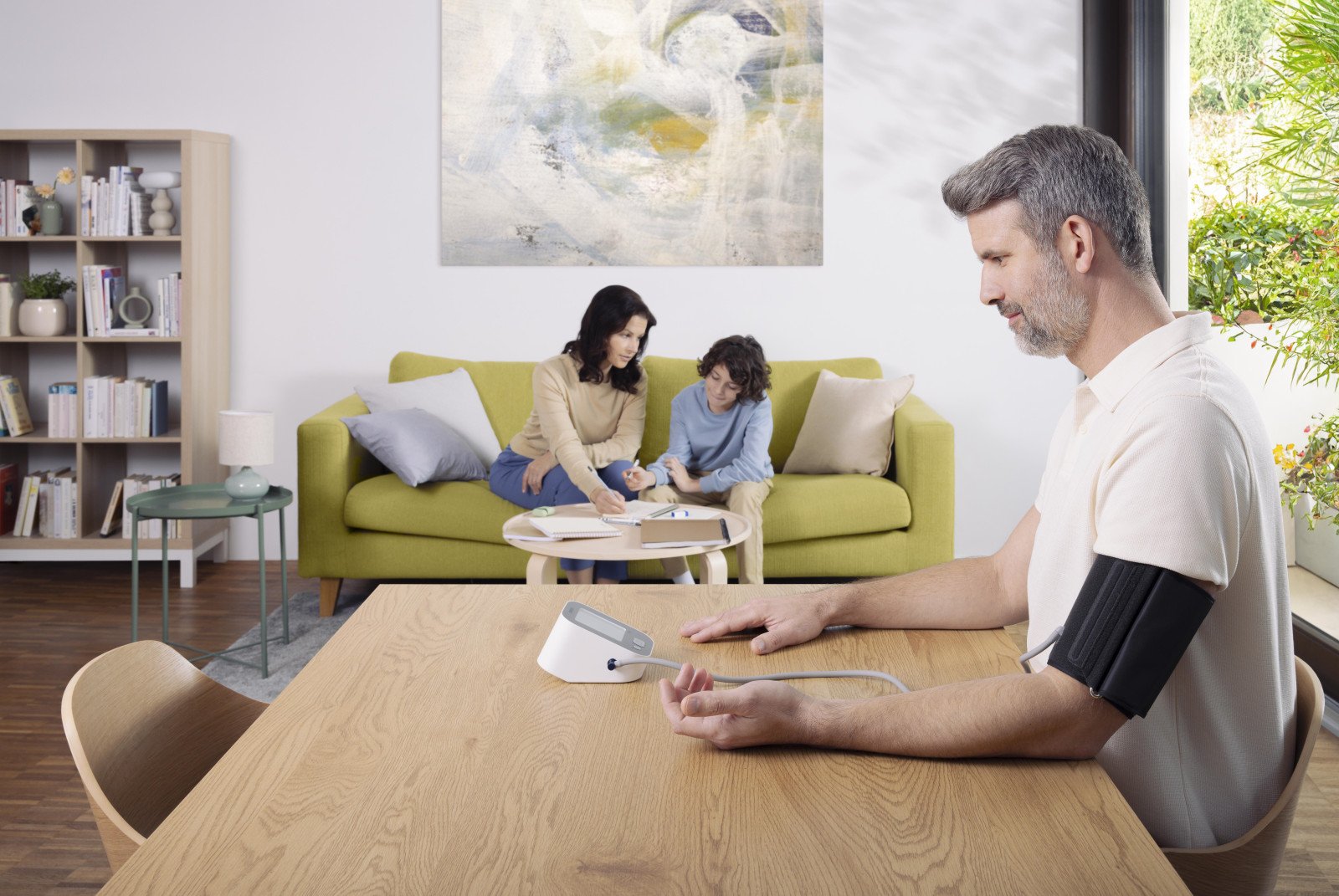Cardiovascular Topics
Atrial fibrillation and machine learning: is early detection a step closer?
A summary of recent research into the accuracy for detecting atrial fibrillation using a novel machine learning algorithm in a blood pressure monitor

Advancements in healthcare technology are transforming how we detect, diagnose and manage conditions. One area of significant progress is the integration of machine learning algorithms into everyday devices, such as blood pressure monitors. Atrial fibrillation (AF), a common and potentially dangerous heart arrhythmia, often goes undetected until complications arise.2
However, a recent study has investigated whether an algorithm, created by machine learning, can enhance early detection of AF when embedded in a blood pressure monitor, offering a new frontier for accessible healthcare.1
The challenge of detecting atrial fibrillation
Traditional diagnosis, in part, relies on consulting irregularities against data from electrocardiogram (ECG) readings, a clinical tool not always accessible to those outside of medical settings.2
However, with advances in artificial intelligence the potential of integrating machine learning algorithms into blood pressure monitors comes into play. These devices are familiar, widely used, and non-invasive, making them an ideal candidate for more accessible AF detection. But do devices such as the new M7 Intelli IT AFib, X7 Smart AFib and the M6 Comfort AFib deliver reliable results?
The study: evaluating accuracy for detecting AF
In this study, researchers tested the detection accuracy of a novel algorithm, developed via machine learning and embedded in a commercially available blood pressure monitor. The goal was to determine whether this system could accurately detect atrial fibrillation in real-world clinical scenarios.1
The clinical study involved 559 subjects: 267 with confirmed AF and 292 without. All of the participants were fitted with 12-lead ECGs, and data recorded for comparison. The blood pressure monitors (BPMs) included 2 with the AI algorithm and 2 without the algorithm. The objective being to compare data between the two different types of BPM, including sensitivity, specificity, and accuracy for the detection of AFib. All 12-lead ECGs were interpreted by a board-certified cardiologist, blinded to the BPM results.1
The benefits of algorithm enabled BPMs
The algorithm was created using machine learning and then embedded in the blood pressure monitor. It works by analysing small variations in pulse rates, which can suggest the presence of AF. What sets the algorithm enabled BPMs apart is their accuracy for detecting AF without external computing power or additional components.1
Furthermore, the algorithm was developed by continually refining its understanding of irregular pulse patterns, the algorithm becomes more capable of distinguishing between normal heart rhythms and the often-subtle irregularities of AF. The result is a detection tool that works with decision trees, enabling a highly personalised approach to navigating decision trees and other diagnostic tools.1
Key findings: performance of the algorithm
The results were encouraging. The 2 novel machine learning algorithm BPMs demonstrated an accuracy of 97% and sensitivity of 95% in detecting AF. Specificity — the ability to correctly rule out AF in patients without the condition — was 98%. These are compelling figures for a non-invasive, home-use device.1
In addition, when it came to paroxysmal AF, an intermittent condition, one benefit of the home-use BPMs is that they can be used whenever required, in the presence of symptoms, or not. Thus, creating a fuller picture of diagnostic data. So, even intermittent cases of AF could potentially be identified with sufficient usage.1
Real world implications for patients
Arguably, early detection of AF leads to early intervention, and that’s critical in preventing complications like stroke or heart failure. This study’s findings suggest that equipping individuals with a simple, smart device could offer life-saving insights long before major symptoms present themselves. Even for those with intermittent AF, repeated use of the device could catch irregularities that would otherwise go unnoticed.1
But what of the future?
With opportunistic screening for hypertensive patients, those with obstructive sleep apnoea, and patients over 65 years of age being recommended by the ESC guidelines. The possibility to increase accurate diagnosis for patients with arrhythmias such as AF is promising.3
Moreover, the potential benefits are significant. If machine learning algorithms embedded in BPMs can continue to improve in accuracy, they could serve as a bridge between clinical diagnostics and everyday monitoring, offering a hybrid approach to healthcare. This would not only reduce the strain on healthcare systems but also empower individuals to take control of their health in a way that was previously unavailable.
A new era in preventive healthcare…
In the end, while machine learning may not replace traditional diagnostic tools, its ability to enhance everyday devices like blood pressure monitors could significantly shift how we approach preventive healthcare. For now, the evidence is clear: integrating smart algorithms into familiar devices is a step forward in shedding light on previously undiagnosed heart conditions.
As technology continues to evolve, the potential to catch conditions like atrial fibrillation early becomes more tangible, closing the gap between detection and treatment. And that brings us back to the core question posed at the start: can al algorithm, created by machine learning, in blood pressure monitors help in detecting AF?
The answer, based on the results of this study, is a resounding yes — at least in part. With further refinement, this technology may soon become key in supporting heart health for millions of people around the world.
For now, if you or your patients might like to try this technology for yourselves, then please take a look at the M7 Intelli IT AFib, X7 Smart AFib and the M6 Comfort AFib to find out more.

Learn more about this new technology on OMRON Academy.
References
- Janik, Matthew, et al. “Diagnostic Accuracy for Detecting Atrial Fibrillation Using a Novel Machine Learning Algorithm in a Blood Pressure Monitor.” Heart Rhythm, 1 Apr. 2024, pubmed.ncbi.nlm.nih.gov/38692340/.
- NHS. Health A to Z. Overview. Atrial fibrillation. Available at: https://www.nhs.uk/conditions/atrial-fibrillation/. Accessed September 2024.
- John William McEvoy, et al. “2024 ESC Guidelines for the Management of Elevated Blood Pressure and Hypertension.” European Heart Journal, 30 Aug. 2024.
OHEAPP-666
